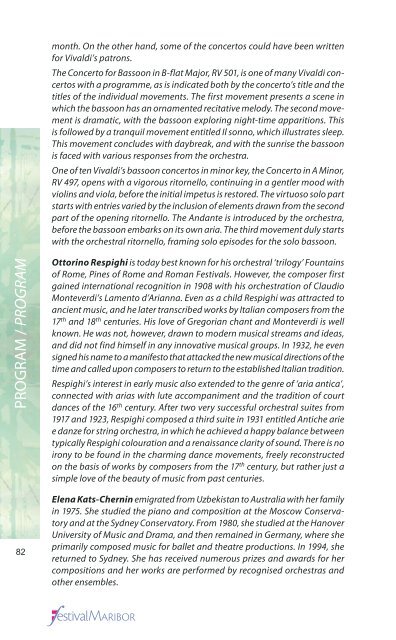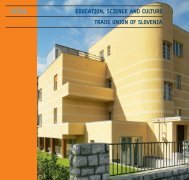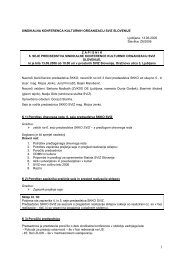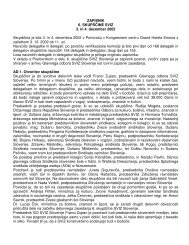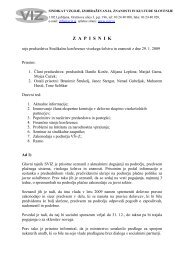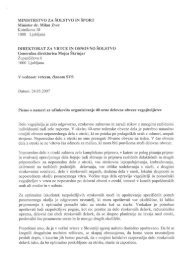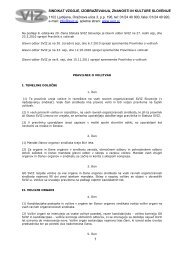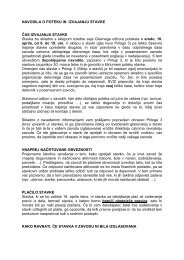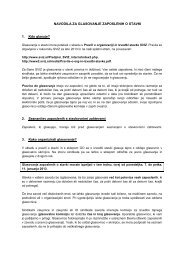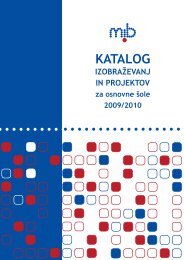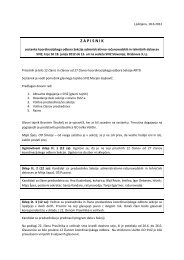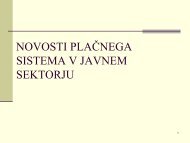Create successful ePaper yourself
Turn your PDF publications into a flip-book with our unique Google optimized e-Paper software.
month. On the other hand, some of the concertos could have been written<br />
for Vivaldi’s patrons.<br />
The Concerto for Bassoon in B-flat Major, RV 501, is one of many Vivaldi concertos<br />
with a <strong>program</strong>me, as is indicated both by the concerto’s title and the<br />
titles of the individual movements. The first movement presents a scene in<br />
which the bassoon has an ornamented recitative melody. The second movement<br />
is dramatic, with the bassoon exploring night-time apparitions. This<br />
is followed by a tranquil movement entitled Il sonno, which illustrates sleep.<br />
This movement concludes with daybreak, and with the sunrise the bassoon<br />
is faced with various responses from the orchestra.<br />
One of ten Vivaldi’s bassoon concertos in minor key, the Concerto in A Minor,<br />
RV 497, opens with a vigorous ritornello, continuing in a gentler mood with<br />
violins and viola, before the initial impetus is restored. The virtuoso solo part<br />
starts with entries varied by the inclusion of elements drawn from the second<br />
part of the opening ritornello. The Andante is introduced by the orchestra,<br />
before the bassoon embarks on its own aria. The third movement duly starts<br />
with the orchestral ritornello, framing solo episodes for the solo bassoon.<br />
PROGRAM / PROGRAM<br />
Ottorino Respighi is today best known for his orchestral ‘trilogy’ Fountains<br />
of Rome, Pines of Rome and Roman Festivals. However, the composer first<br />
gained international recognition in 1908 with his orchestration of Claudio<br />
Monteverdi’s Lamento d’Arianna. Even as a child Respighi was attracted to<br />
ancient music, and he later transcribed works by Italian composers from the<br />
17 th and 18 th centuries. His love of Gregorian chant and Monteverdi is well<br />
known. He was not, however, drawn to modern musical streams and ideas,<br />
and did not find himself in any innovative musical groups. In 1932, he even<br />
signed his name to a manifesto that attacked the new musical directions of the<br />
time and called upon composers to return to the established Italian tradition.<br />
Respighi’s interest in early music also extended to the genre of ‘aria antica’,<br />
connected with arias with lute accompaniment and the tradition of court<br />
dances of the 16 th century. After two very successful orchestral suites from<br />
1917 and 1923, Respighi composed a third suite in 1931 entitled Antiche arie<br />
e danze for string orchestra, in which he achieved a happy balance between<br />
typically Respighi colouration and a renaissance clarity of sound. There is no<br />
irony to be found in the charming dance movements, freely reconstructed<br />
on the basis of works by composers from the 17 th century, but rather just a<br />
simple love of the beauty of music from past centuries.<br />
82<br />
Elena Kats-Chernin emigrated from Uzbekistan to Australia with her family<br />
in 1975. She studied the piano and composition at the Moscow Conservatory<br />
and at the Sydney Conservatory. From 1980, she studied at the Hanover<br />
University of Music and Drama, and then remained in Germany, where she<br />
primarily composed music for ballet and theatre productions. In 1994, she<br />
returned to Sydney. She has received numerous prizes and awards for her<br />
compositions and her works are performed by recognised orchestras and<br />
other ensembles.


